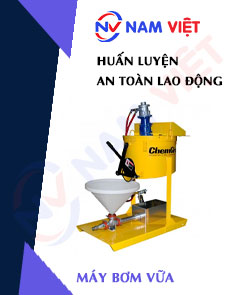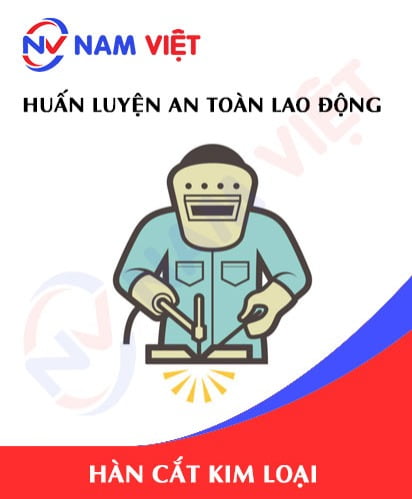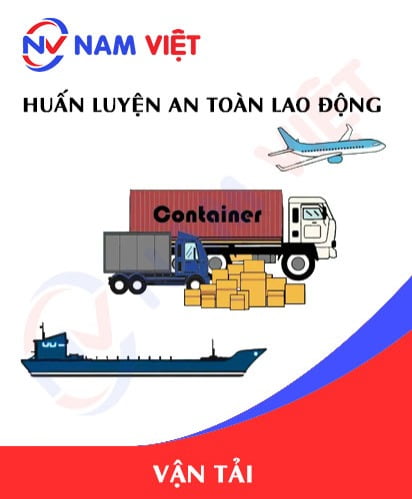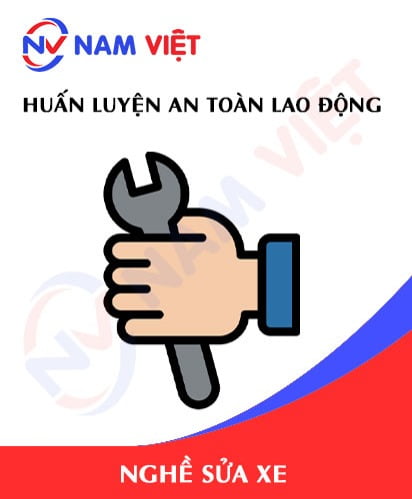Occupational Safety Training for Mortar Pump Operation
99,000 ₫
Note: The above price is calculated for one person. Prices may vary depending on the number of trainees participating in the course and market fluctuations. For more accurate pricing information, please refer to the price list or contact our consultants directly.
Occupational safety is an important issue when operating a mortar pump and needs to be addressed promptly to ensure the health and safety of workers while also enhancing the reputation of businesses here. The Occupational Safety Training course is one of the effective solutions to raise awareness of accident prevention among workers when operating mortar pumps.
Table of Contents
Toggle1. Overview of Grout Pumps
a. What is a Grout Pump?
A grout pump is a device used in construction and industry to pump grout, adhesives, or other liquids from one location to another through pipelines. Grout is a liquid or powder mixture used to fill gaps, secure, and connect steel components, concrete structures, or for other construction applications.
Grout pumps are commonly used for tasks such as:
- Filling gaps and voids in concrete structures to reinforce and ensure uniformity of the structure.
- Filling holes, cracks, or cavities in construction works to create a smooth and complete surface.
- Bonding tiles, bricks, stones, or decorative masonry onto surfaces.
Grout pumps are usually designed to handle materials that are liquid when applied and harden after setting, ensuring the strength and uniformity of construction structures.

b. Operating principle of a grout pump
The operating principle of a grout pump is based on generating pressure to push the liquid (grout) from one point to another through pipelines. Key steps in the operation include:
- Feeding: Grout or liquid is prepared in a container or mixing tank. Typically, grout is a mixture of sand, cement, and water, combined in specific ratios to achieve the required properties for the application.
- Pumping: The grout pump is activated, using a system of pistons or channels to generate pressure, which is maintained throughout the pipeline.
- Grout Delivery: The liquid is pushed from the pump through the pipeline to the desired location, such as gaps, voids, or surfaces needing coverage.
- Flow Control: Grout pumps usually have switches or valves to adjust the flow, allowing operators to control the amount delivered according to the job requirements.
- Quality Control: During pumping, quality control ensures the grout meets requirements for consistency, adhesion, and structural integrity.
- Completion: After the grout reaches the target location, the pump is stopped. This step is crucial for quality control and material efficiency.

c. Industries using grout pumps
Grout pumps are used across various industries, including:
- Construction: Filling gaps in concrete structures, reinforcing columns, foundations, and other structural elements for strength and uniformity.
- Mining and Drilling: Pumping grout or adhesives into drill holes to stabilize or bind soil and rock, preventing leakage and ensuring structural stability.
- Oil and Gas: Delivering grout or other liquids to create protective or corrosion-resistant structures within pipelines and infrastructure.
- Chemical Industry: Transferring chemical liquids from storage tanks to production equipment or application points.
- Maintenance and Repair: Public infrastructure repair such as bridges, dams, and seawalls, using grout to fix structural damage caused by time or environmental factors.
- Automotive Manufacturing: Pouring grout into molds to form metal or plastic parts, or for engine and chassis component production.
2. Overview of Labor Safety Training for Operating Grout Pumps
a. What is Labor Safety Training?
- Labor safety training for operating grout pumps consists of sessions that raise awareness on preventing workplace accidents. Workers directly operating grout pumps belong to Group 3.
- Safety training helps workers recognize hazards and avoid risks, reducing workplace accidents.
REGISTER FOR LABOR SAFETY TRAINING SERVICE
b. Training duration
Initial safety training duration:
- Total training time is at least 24 hours, including exams.
- 8 hours theory on labor safety policies and laws
- 8 hours theory on basic labor safety knowledge
- 4 hours theory on specialized training content
- 2 hours practical training on specialized content
- 2 hours theoretical exam at the end of the course
The safety training center divides the course into multiple sessions depending on workers’ schedules, typically 6 sessions over 3 days if the company arranges continuous training.
Periodic safety training:
- Before the labor safety card expires, workers must undergo periodic safety training with at least 50% of the initial training duration.
Explanation: Total periodic training is at least 12 hours, including exams. After passing the course and exam, the labor safety card is reissued and extended.
c. Training content
| No. | TRAINING CONTENT | TRAINING DURATION (HOURS) | |||
| Total | Including | ||||
| Theory | Practice | Exam | |||
| I | Labor safety policies and legislation | 8 | 8 | 0 | 0 |
| 1 | Overview of legal documents on labor safety and hygiene. | 6 | 6 | ||
| 2 | Standards and technical regulations for labor safety and hygiene. | 1 | 1 | ||
| 3 | Specific regulations from state authorities on labor safety for new, expanded, or renovated facilities and equipment requiring strict safety compliance. | 1 | 1 | ||
| II | Basic labor safety knowledge | 8 | 8 | 0 | 0 |
| 1 | Basic knowledge of hazards and harmful factors at the workplace. | 4 | 4 | ||
| 2 | Methods to improve working conditions. | 1 | 1 | ||
| 3 | Safety culture in production and business. | 1 | 1 | ||
| 4 | Rights and responsibilities of employers and employees; labor safety policies and procedures; roles of safety officers. | 1 | 1 | ||
| 5 | Safety rules, signage, safety equipment, personal protective equipment; first aid, and occupational disease prevention skills. | 1 | 1 | ||
| III | Specialized training content | 6 | 4 | 2 | 0 |
| Knowledge of machines, equipment, hazardous substances; risk assessment and management; safe working procedures with machines and materials requiring strict safety compliance. | 6 | 4 | 2 | ||
| IV | Final exam | 2 | 2 | 0 | 0 |
| Total | 24 | 22 | 2 | ||
See more training contents for all 6 groups
d. Labor Safety Card
After completing the labor safety training and passing the exam, workers will be issued a labor safety card (commonly called a Group 3 labor safety certificate).
The card shows personal information: full name, date of birth, job, and work environment, along with training duration, official stamp, and signature confirming completion.
According to Article 24, Clause 2 of Decree 44/2016/ND-CP, there are two cases:
- If the employer and employee have a labor contract, the employer must stamp and sign the safety card after the employee completes training and passes the exam.
- If the worker is freelance or seasonal, without a labor contract, the training unit must stamp and sign the safety card after completion and passing the exam.

3. Hazards When Operating a Plastering Pump
Operating a plastering pump can involve various hazards that must be carefully managed to ensure the safety of workers and equipment. Here are some common hazards when operating a plastering pump:
- High pressure: Plastering pumps generate high pressure to push fluids, and this pressure can cause injuries if not properly managed. Hazards include tank or pipeline bursts if the pressure is too high, as well as risks to workers from pressurized liquid spray.
- Jamming and tipping: Plastering pumps are heavy and may jam or tip if not placed and operated on firm, flat, and stable ground. A jammed or tipped pump can cause injuries and damage the machine.
- Electric shock: On construction sites and in mining environments, there is a risk of electric shock if the pump operates near electrical sources. This can cause injury or dangerous situations.
- Exposure to hazardous liquids: If the pump is used for hazardous liquids or chemicals, exposure may harm workers’ health. Safety measures and appropriate protective equipment are required.
- Fire: Operating a plastering pump near open flames or flammable fuels can create a fire risk. Proper management of flammable materials and safe pump operation are essential to avoid hazards.
- Lack of machine knowledge: Using a plastering pump without understanding its operation, maintenance, and repair can lead to injuries and equipment damage.

4. Occupational Accident Control Measures When Operating a Plastering Pump
Controlling occupational accidents when operating a plastering pump is an essential part of a safe working process. Here are some measures for accident control when working with a plastering pump:
- Training and education: Ensure all personnel working with the pump are trained and understand how to operate it safely. They should know how to control the pump, manage pressure, and respond to hazardous situations.
- Use of personal protective equipment (PPE): Ensure all personnel are equipped with PPE, including helmets, safety glasses, gloves, safety boots, and protective clothing. PPE protects workers from spray, injuries, and other hazards.
- Regular inspection and maintenance: Plastering pumps should be inspected and maintained regularly to ensure safe and efficient operation. Any technical faults must be repaired immediately.
- Pressure management: The pump’s pressure must be carefully controlled according to the manufacturer’s guidelines. Always monitor pressure and do not exceed safety limits.
- Hazardous liquid management: If pumping hazardous liquids or chemicals, follow specific rules and guidelines to ensure safety during operation and waste handling.
- Work environment management: Ensure the working environment is safe and clean, eliminating risks of slips or accidents caused by unsafe conditions.
- Compliance with regulations and instructions: Follow all safety regulations and manufacturer guidelines for the plastering pump.
- Pre- and post-operation safety checks: Perform safety checks before starting and after completing work to ensure the pump operates correctly and there are no incidents.
- Periodic inspection of the plastering pump to detect safety issues such as wear, damage, or mechanical faults, thereby reducing the risk of occupational accidents.
5. Benefits of Occupational Safety Training
An Toàn Nam Việt provides your business with the following benefits after completing occupational safety training courses in accordance with Decree 44/2016/ND-CP regarding occupational safety and hygiene for companies, factories, and enterprises.
- Workers can identify potential accident risks and take preventive measures to avoid occupational accidents.
- Your business can establish risk prevention measures in production, operation, and maintenance processes.
- Minimizes costs associated with safety risks in the workplace.
- Continuous production improves labor productivity and product quality.
- Compliance with occupational safety laws avoids legal risks.
- Enhances credibility and professionalism, boosting your company’s brand image.
Nam Việt’s training courses help prevent external hazards from affecting individuals, enabling them to avoid potential injuries or worse.
REGISTER FOR OCCUPATIONAL SAFETY TRAINING SERVICES
6. Customer Feedback After Completing Training
An Toàn Nam Việt has years of experience supporting businesses across Vietnam, especially in the southern provinces. This responsibility is invaluable to Nam Việt, which is why our Occupational Safety Training is increasingly professional. Our growth is driven by positive feedback and suggestions from clients. Below are some testimonials from our partners.
See more customer interviews after using our services from An Toàn Nam Việt
7. An Toàn Nam Việt’s Occupational Safety Training Capabilities
An Toàn Nam Việt is a leading and reputable occupational safety training center in Vietnam. Training sessions are continuously conducted at factories, workshops, and construction sites nationwide (all 63 provinces).
REGISTER FOR OCCUPATIONAL SAFETY TRAINING SERVICES
Occupational safety training license
- An Toàn Nam Việt has been inspected and certified by the Department of Safety under the Ministry of Labor – Invalids and Social Affairs, confirming our capability in occupational safety and hygiene training.

Training materials
- All training materials are reviewed to ensure accurate knowledge and effective application before being used in safety courses.
- Our instructors’ teaching methods follow An Toàn Nam Việt standards, based on expert research and practical experience, maximizing knowledge retention for learners.
Facilities
- Controlling classroom factors enhances teaching performance and knowledge absorption.
- Our training facilities provide spacious classrooms with standard lighting and training equipment.
8. Nationwide Reputable Occupational Safety Training Center
At An Toàn Nam Việt, we prioritize occupational safety education. Teaching workers to protect themselves contributes to national development.
We carefully prepare every detail, from tools and teaching equipment to curriculum, materials, sound, and lighting.
Our instructors are experienced specialists, with research in hazard identification across industries and prevention methods.
Lessons are practical and engaging, helping workers comfortably absorb knowledge while complying with Decree 44/2016/ND-CP.
This enables workers to apply safety measures effectively in their work.
Our training center is proud to provide professional and reputable safety training with advantages such as:
- Competitive training costs without compromising quality.
- Flexible scheduling to fit production needs.
- Fast, compliant certification procedures.
- Experienced instructors.
- Classrooms optimized for teaching efficiency and knowledge absorption.
- Curricula tailored to occupational safety in enterprises.
- Dedicated, professional support for clients.

9. Additional Occupational Safety Training Resources
- Occupational safety documents for operating a plastering pump
- Occupational safety training materials
- Occupational safety test set
- Occupational safety multiple-choice test for plastering pump operation
- Training slides for operating a plastering pump safely
1 review for Occupational Safety Training for Mortar Pump Operation
No comments yet















phanminhhang341
Giảng viên dạy rất sinh động dễ hiểu!